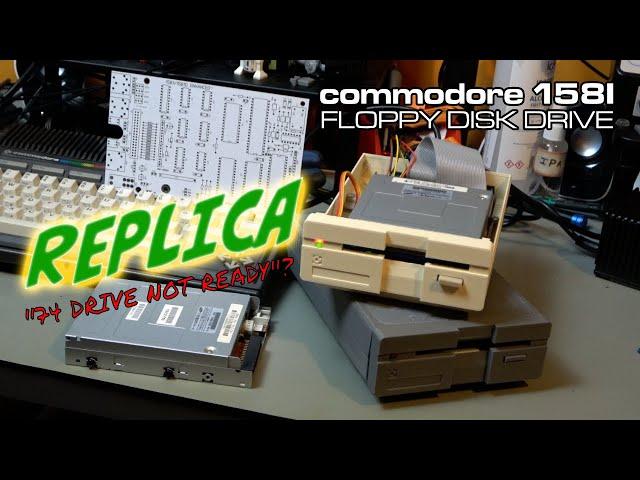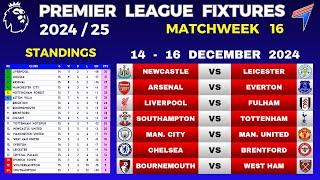
Commodore 1581 Replica Build
With original 1581 drives becoming increasingly rare and correspondingly expensive, building a replica may be the only way to get your hands on Commodore's 8-bit wonder drive at a reasonable price.
And it turns out that while some components are not particularly cheap, it isn't a difficult build to complete.
But getting it to work reliably might be a lot harder than you think...
Check out Lee's Gotek 1581: https://www.youtube.com/watch?v=ZaS55XLTBcU
Retrobits 1581 build: https://www.youtube.com/watch?v=8_3zLvWC-ZI
1581 Enhanced PCB: https://www.pcbway.com/project/shareproject/Commodore_1581_Enhanced_Drive_Board_1581D_1582_build_compatible_d1430f2c.html
PC Drive Adapter: https://www.pcbway.com/project/shareproject/1581_PC_Drive_adapter_7b0c4d86.html
If you'd like to help support this channel, please check out my Patreon. You can also make a one-off donation or use the channel Super Thanks.
Patreon: https://www.patreon.com/timsretrocorner
Donate: https://www.paypal.com/donate/?hosted_button_id=DC2YUGZDYKHRN
Follow me on Mastodon: https://retrorewind.social/@trc
00:00:00 - Introduction
00:00:27 - Parts Overview
00:01:15 - Checking the PCBs
00:02:24 - Soldering the Small Parts
00:06:46 - Soldering the Sockets
00:08:44 - Crystal Oscillator Confusion
00:14:19 - Putting In The ICs
00:19:41 - The Final IC
00:23:44 - First Power-On Test
00:28:31 - Power up with drive attached
00:31:10 - Plug it in to the Plus/4
00:44:18 - And then it all went wrong
01:00:12 - Recapping the drive
01:04:55 - Trying the Recapped Drive
01:06:53 - Boxes and Screws
01:14:27 - Conclusions
Тэги:
#commodore #8-bit_computing #floppy_disk_drive #retro_computing #replica_hardware #1581Комментарии:

it gets really tedious if things go pear shaped and one is running out of ideas what's wrong. and even the community, too. Props for your patience and not losing motivation!
Ответить
The CMD FD-2000 has the same issue of not recognizing when a new disk is inserted. CMD stated that when swapping disks, a reset command must be sent, similar to the "I" command. So perhaps that's an issue with all 3.5 inch drives? (From CMD's Commodore World Issue 24 Pg 16: "If you don't do this, the drive often ends up using incorrect information stored in variables")
However it seems to be the least of your problems; fingers crossed you solve this!

Nice video Tim, it's always a pleasure to watch you. Thx.
Ответить
I've had all of the same problems and I'm still dead in the water on this build. I have tried three different floppy drives, two are different PC drives, one is an Amiga 500 drive. I have also tried multiple different IC's, different ROM's, different SRAM, different CIA, different floppy controller 1770 vs 1772. All a failure. I just get a drive that spins forever and can't read anything. It also locks up my Commodore Plus/4 and causes it to hang and I have to power it off to free the computer. I've also tried 74LS vs 74LSHCT logic and that didn't work. I can't see how anyone would have managed to build this and get it working and stay working. If they did, then I'd sure like to know how because for me, it's been nothing but endless frustration as well as a lot of money sunk into this project.
Ответить
Use your scope and measure voltages under load...
Ответить
I think most people would upgrade to a Gotek anyway, but troubleshooting the problem would interesting, indeed :)
Ответить
Weird that it's so quirky. I have been accumulaiting the kit to build some of these. I'll have to try it and see what happens.Thanks for a great video about it, now I'll go in eyes wide open.
Ответить
Sorry things didn't work out from the start - that is really frustrating. I hope collectively you are able to diagnose what's wrong and get all of your 1581s working. I've ordered a replacement drive for my unit, but I believe my particular issue was self-inflicted (reversed the 12 and 5v lines going to the floppy drive, whoops!!). Will keep you posted when I know more!
Ответить
Love the video. I'm sure you've thought of this, but could there be something funny going on with the Plus4? I wonder if you tried it in another Plus4 or a 64 do you get the same issues?
Ответить
Thank you for your in-depth testing of this kit, Tim! I built a similar kit a little over a year ago and could not get it to reliably work with my C16. I do not have a C64 to test with, and I'm not sure if that is a factor; after all, the I/O DOS is the same in both machines.
I initially had several issues with bad I/Cs (verified with a BackBit Chip Tester): bad 8520, bad 65C02 (and later a mis-labeled 6502A). The USB cables and adaptors I used to power the device also introduced too much of a voltage drop leading to instability in the power source. However after rectifying those issues, I am currently in the same state that you presented in your video: the drive will not reliably retrieve data. Periodically, a directory listing or file retrieval is truncated and the drive hangs requiring a reset. I have tested with the stock and JiffyDos ROMs with the same results. I have not tested the disk changing issues you experienced, but given that our builds share the same issues, I'm certain it will occur on my unit as well.
The only components on the PCB that I was dubious about when purchasing were the ferrite beads. I bought ones that best matched the diameter and length of the original specs but seeing as the BOMs for this build state something like "just get them from a spare C64", I'm uncertain that I installed the correct values.
Thank you again for documenting the faults. Hopefully someone who has gone through this build and has also corrected these problems can share their remediation procedure!

Really stupid question to ask, but I noticed that when you power on the plus-4 first and then power up the 1581 second you always get errors (as if the serial bus is not being initialised correctly). But when you power up the 1581 first and the power up the plus-4 you seem to get it to work - which shows that the 1581 is powering up and running on its DOS and when you turn on the plus-4 that will re-initialise the serial bus thus putting the plus-4 and 1581 in a good state - as doing a directory after that power up sequence seems to show a directory correctly.
But when you eject the disk and put in a new disk does the 1581 re-initialise the serial bus, as something must happen to tell the 1581 that the disk as been swapped. It might be a good idea to put a scope on the serial bus between the plus-4 and 1581 and see what happens when you eject a disk and put in a new one.

You don't have to close the line ever time you run one of those disk commands. Why do you think you have to keep closing after opening? Why not just leave it open and then continue to use "print#15..."?
Ответить
Great sweater and great video!
Ответить
Nice video. I am going to build this, so this was good for preparation. Hopefully I you figure it out some time later
Ответить
Have you tried it with the floppy drive on its back to get it away from the board ?
If something is marginal on the board, like say a missing or badly soldered pull up resistor, the EMI from the drive mech itself could explain the seemingly random behaviour.

have you tried testing continuity of the /RDY and /disk_chng signals?
ideally from the back of the connector on the drive to the top of the pins on the 8520/6526

The 6526 will work fine in fast serial mode.
Ответить
59 minutes in roughly u touched the drive and the screen flickered
Ответить
How does this board differ from a salvaged 1571? I believe the 1571 and 1581 use the same circuit, only a different floppy mechanism. David Murray (The 8-bit Guy) built a 1581 using a 1571 board and an Amiga floppy and it worked without a problem.
Ответить
I'm not an expert but maybe something slightly off with some timing somewhere as suspected. This old tech was designed with old chip timing difficulties in mind. A few milliseconds difference between old and new chips makes a difference.
Ответить
would have been nice if they had incorporated that adaptor in to the main board as 95% of the people building them are using PC drivers.. all so keep an eye on that 7805 mine got MAD hot like burring your fingers, ended up replacing it with a 5v switching reg that had the same formfactor.
Ответить
Have you tried a different power supply
Ответить
Love this!!! (Building a drive, not the frustration, obviously) Only 25 minutes in, I have some remarks. They may be in vain, but before I forget; The jiffy dos roms do not need a switch; on the 1581, 1571 and 1541-II the rom is big enough that it has a fallback to slow in case the c64 is stock. For power, there are 12+5 adapters on amazon, only need a DIN4 plug, also, I found a project I had built by PCBWay that is a USB-C power delivery board that provides 12 and 5. Would also require a DIN4 cable and plug. Luckily, AliExpress has them plenty :) now back to the video ;) once again, thank you for sharing this.
Ответить
Almost at the end now. I feel your frustration. I got myself 5 drives only to get one working. The original one in my 386 pc just spontaneously refused to respond. (General failure reading drive A). I know, not C64, but I get it. I have been blessed with an original 1581 but plan to build one or two (just because I can, it’s a hobby ;) ). In relation to that; what filament did you use for the “beige” one? I can’t seem to find a good supply PLA in retro-white. Looking forward to a followup in which hopefully you have found some answers.
Ответить
Man! When I remember these cursed projects in 80's electronic magazines. No circuit diagram was correct, no pcb layout was correct, Homebrew pcb's, holes drilled by hand. Not enough money to buy ic sockets ... Brings back nemories.😁
Ответить
Please try to increase the supply voltage. Use a bench power supply to see what your voltages are. Increase in steps of 100mv until it works or until it is almost dangerous. I'm almost sure this is a voltage issue.
Ответить
Could be a bad chip socket
Ответить
This sounds like a signal integrity problem to me. Are the termination resistors enabled in the floppy drive?
Ответить
Man that Sucks you are having a problem I built 2 of them and they just worked.
the only problem I had was with HD Disks and the drive density switch I had to jump the switch so it thinks all disks are DD

Hello. I'm the "COREi64" guy whos board you built in this video. Your inability to get it working concerned me enough to sit down and build another one of my boards. I do need to point out that every build I've done with my boards work out of the gate, and the new board that I just built today is not an exception. Worked straight away. Soldered it up, plugged it in, and it just worked.
That having been said, when I was first selecting components, I did run into intermittent issues with some of the ICs that I'd selected for the build. Since that time when I was developing the board, I'd narrowed down the main culprit to the 7406 chips. I found some manufacturer chips simply didn't work, or gave me spotty performance. The 7406's that ended up working for me, I bought from Jameco and were NOS Fairchild DM7406N's. With those, any strange performance issues went away.
If you'd like to reach out directly to me (if you haven't already resolved the issues) I'd be happy to try to help you with your board.
Given that you're experiencing similar spotty performance between my board and DIY Chris's board, that further tells me that it's likely a part selection issue rather than a board issue.

You mentioned that Captain Commodore got a Go-Tek to work well. That would suggest that the power consumption of the physical drive is a lot higher on the reproduction boards or that the voltage regulation is out. it would definitely be worth scoping the voltages and power draw to compare the physical versus SD-Card based drives. Is there a newer, more efficient, pin-identical voltage regulator that doesn't require so much cooling? In my limited experience of mid-90s PC components, a single component running too hot would often bugger communications between more sensitive items on the board.
Ответить
Don't Amiga drives have a twist in the cable?
Ответить
The resistor packs there are 3 of them. Make sure you got the right values in the correct positions 1 is a different value. Kit works perfectly with either 6502 or 65c02. I think you have on in the wrong position. Or you used 3 of the same value.
Ответить
Hi Tim,
I have a 1581 replica myself. The drive is always selected as the drive select signal is directly connected to GND. In the original 1581 you won't recognise this as the drive itself used there has no LEDs.
The drive you use is a Samsung SFD-321, right? I also use this drive for my replica. There are different versions, later ones are cost reduced to the max. One of the two drives I own even is hardwired to HD and does not have the HD detection switch. When I remember correctly I used my second drive as reference and boched the PCB to have it permanently set to DD. Using the drive with the wrong settings (presets for the heads like magnetic field strength, filter setting of the head amplifier etc.) can lead to read/write errors.
And there's more: In my drives some of the switches had contact problems so that a closed switch had a resistance of several kOhms. If that's the case with the disk presence switch or the write protect switch you can have all sorts of funny issues like disk changes not detected at all or permanently (I don't know by heart which state the switches have with an inserted disk or with no write protection). So it's definitely worth to check a) if your drive has an HD detection switch and even if it has to think about hardwiring it to DD and b) to check if the switched are working properly.
And a final point: These drives use 5V only as you noted correctly. In general the power supply scheme of the 1581, the Amiga and most likely the C64 is quite poor in the way that the 5V rail is directly powered from an external supply over long cables while the currents are quite high. When the drive is stepping or starting the motor this can lead to voltage dips. I noticed that you use quite thin and long cables to you bench power supply. I can imagine that this leads to malfunctions while a Gotek drive that mainly needs to power a 3.3V microcontroller is a much lower load than a real drive. So you could/should check the power rail with an Oszilloscope directly on the PCB.
P. S. As I have no spare custom chips I bought a ready built PCB as nowadays chances are quite high to get fake or defective parts.

I can now report that after following the instructions provided by Retrobits, I now appear to be having a reliable working drive. I removed the PC adapter board completely and did the modifications on my Samsung SFD-321B. The only other odd thing I encountered is "device not found". Even though the instructions I could find online for a 1581 said both switches in the rear need to be UP for device #8, I ended up only able to get it to work with both switches DOWN. I'm not sure where the discrepancy here is.
Ответить
I built a 1581 replica using the same PCB you have in this video (from PCBWay designed by Thomas Christoph in Canada). Mine was exhibiting similar issues, random working and then not. What I found after staring at the PCB for seemingly hours was that I installed one of the RP1/RP3 resistor networks the wrong way around. Pin 1 on each are towards the outside edge of the PCB. I originally had both in the same orientation.
Ответить
This is quite interesting, particularly because I have an original 1581 which exhibits several of the same symptoms. It has all its original ICs as far as I know and the original Chinon drive as well.
I have been meaning to investigate it closer at some point, so I hope you get some clues to what would be causing this.

You said you changed out several chips, also the 1770 with a 1772, you know these have different default step rates. You can run them but they work better with modified firmware.
Ответить
Well, at least the 1581 replica enhanced board (courtesy PCB Way) sure has some layout flaws. The Replica Design is (as every board design, which is currently available) derived from the original Commodore 1581 board layout.
According to these schematics, the ceramic capacitor marked "C5" on the board is only connected to ground on one side, but not to 5 V on the other, just as it should be. Seems like the Via of one side of the capacitor is not connected to the +5V on the 8520.This Via leads to nowhere , so the capacitor does not do anything.This cannot be right. As this capacitor acts as a filter cap, it may be a source for the drive not working reliably. Don´t know how that looks on other board designs. I guess there should be such a capacitor on other designs as well. Other flaws are minor, but might be irritating such as there are two "U4" markings printed on the board, the design needs some corrections nonetheless...

Hi. I just finished 1581 today. I struggled with this project for two weeks because it didn't work, but now it works 100%. One binding finding. An inverter must not be used to power this device, but a classic transformer and rectifier. The converter causes a lot of communication errors both on the 1581 board and on the serial line. The power supply during operation must not drop below 5 Volts.
Ответить
I chanced the 8520 with a 6526a and my problems where over, i use the 128 fast serial and it worked to, but Maybe i need to test it some more
Ответить
You have a power supply problem, check the voltages with an oscilloscope that do not have ripple when the floppy drive works
Ответить
I'm curious about your ground routing, also what is the noise polution like, as in are there certain days that are much noiser?
If atmospheric noise is not a problem then I would suspect connectors and cables may have intermitten issues.

Finally a color-coordinated 1581 for my Plus 4!
Ответить
hi! which model floppy drive did you use for this? Thanks!
Ответить
I had to use the adapter board for the floppy you pictured - and all LS and 7406/7407 ICs (no tolerance for any variations in chips) on the DIYChris board. It gets along fine with two other 1571 drives on my C128 with a Panasonic JU261 drive in it. The light does stay on; that's a way the floppy light is wired - just unsolder the LED - you're supposed to reply on the Commodore lights. Stay with in tolerance spec value components as well. It's a good kit and works well, and the first time I built it the issues were all mine (bad 8520, bad WD IC - I got a chip tester after that.)
Ответить

























